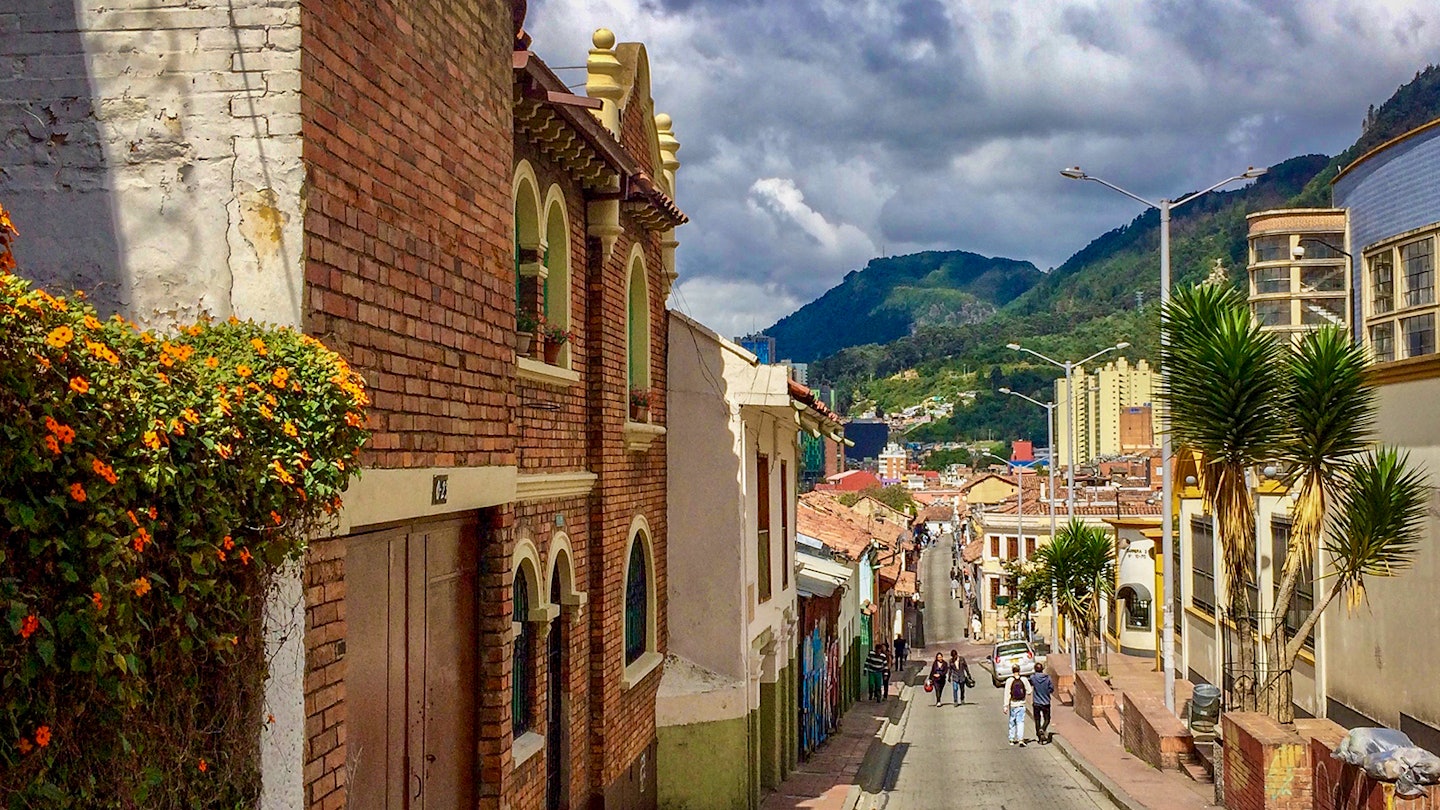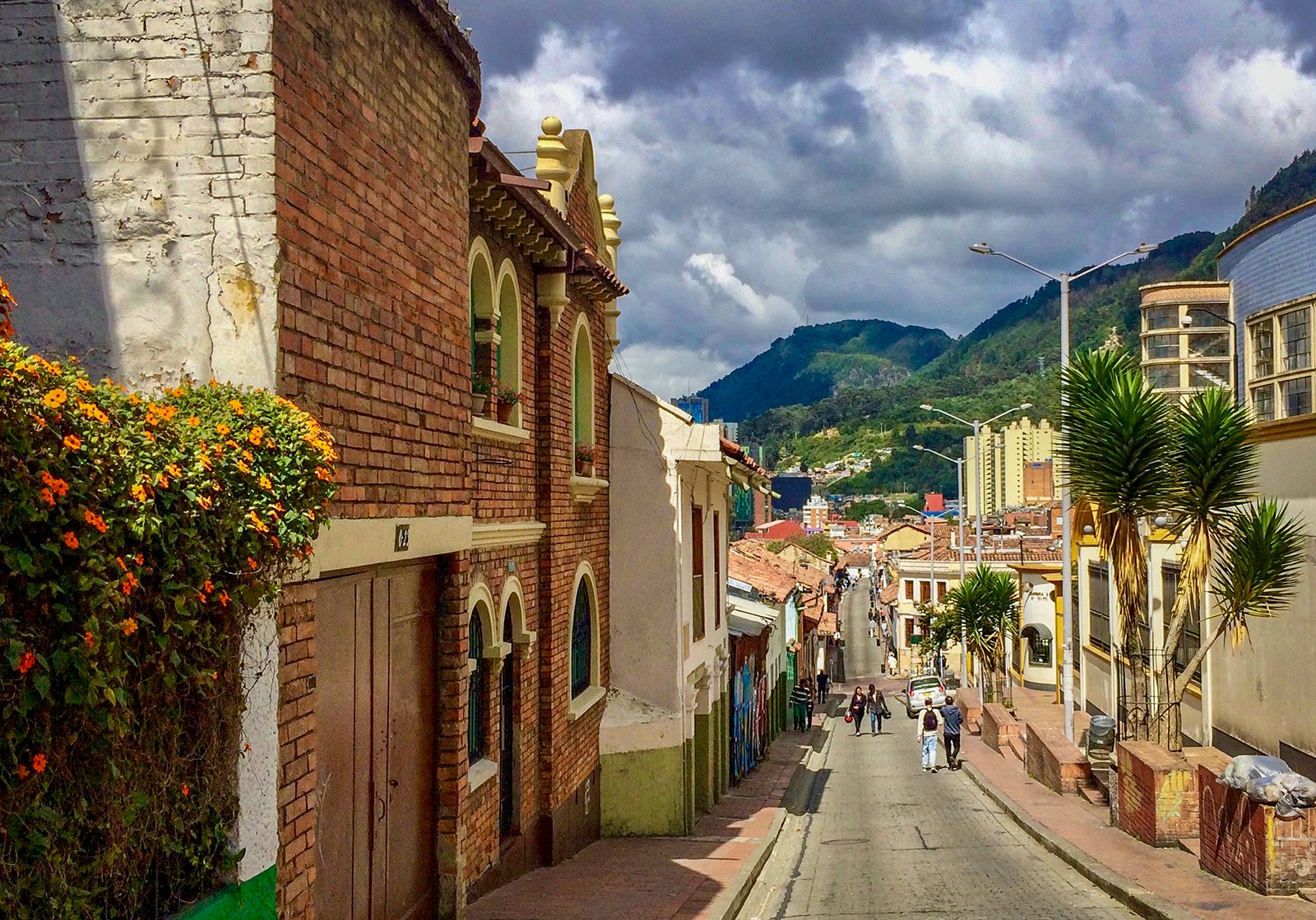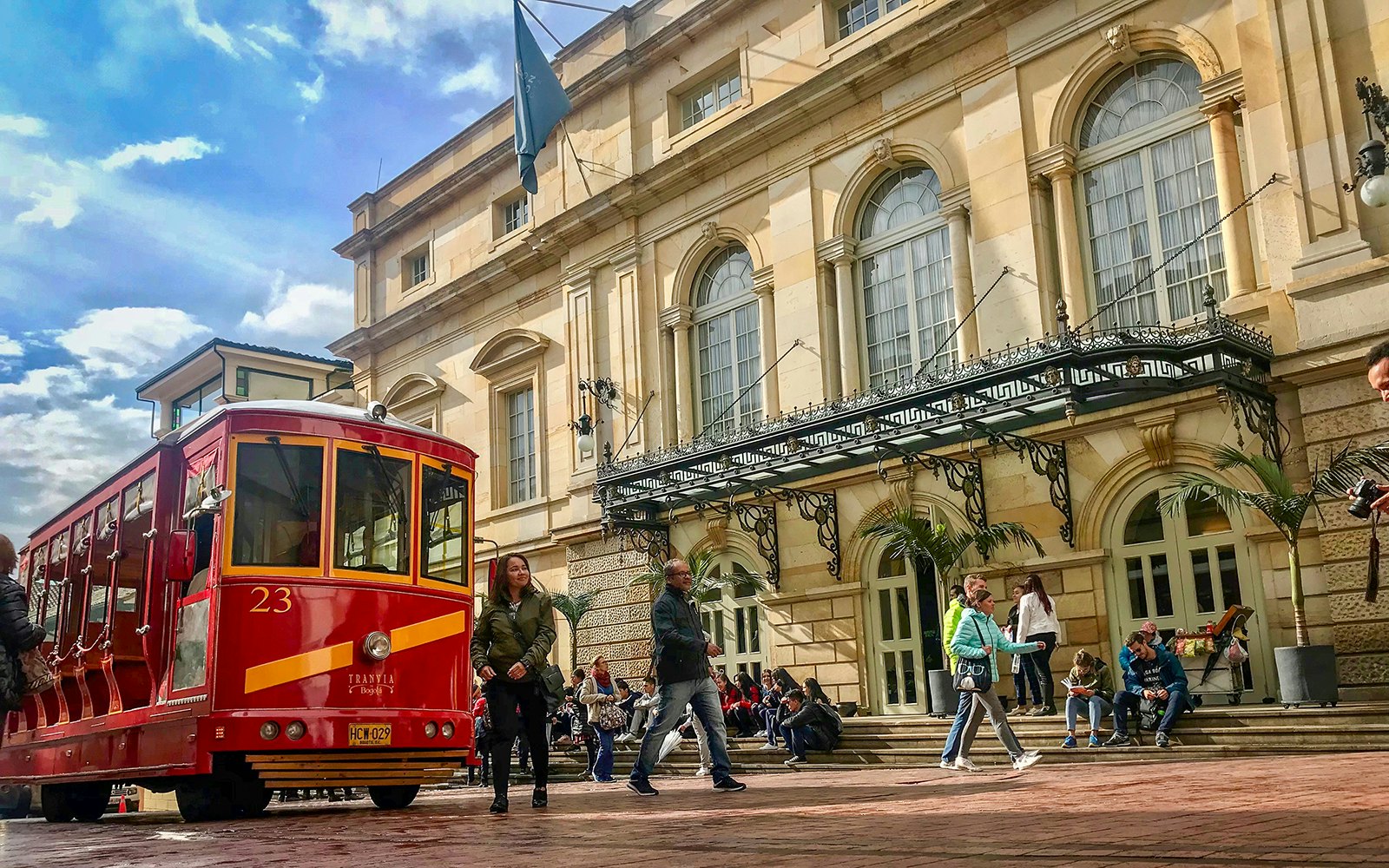
Sep 26, 20195 min read
Cali on wheels: adventures in Colombia's hottest city by bike, scooter or cable car
Walk the historic streets of La Candelaria on our history tour © Jacqui de Klerk / Lonely Planet
Downtown Bogotá is a treasure trove of historical sites, colonial architecture, ornate churches and some of the country's best museums: the perfect place to wander for those enthralled by the evolution of a capital. Sometimes it's hard to know where to start in a city of this size, so we've come up with the perfect walking tour for the traveling history buff.
Start: Casa Museo Quinta de Bolívar
End: Plazoleta Chorro de Quevedo
Length: 3.7 km; two-three hours, (depending on how long you stay at the museums)

Begin at the 19th-century Casa Museo Quinta de Bolívar to explore the home of "The Liberator" Simón Bolívar. At the foot of Cerro de Monserrate, hidden among a well-tended garden, this historic colonial estate offers a calm escape from the restless metropolis. The lush property and mountain backdrop also make the house museum an ideal location for birdwatchers wanting to spot endemic species.

Exit the museum and walk down Calle 19A towards La Candelaria, Bogotá's historic center, popular with tourists because of its colonial architecture, museums, restaurants and bars. After passing the Los Andes University and Parque Germania, you’ll approach Plazuela de La Aguas. A little further down the hill, on the left, you can take a photo at the statue of Policarpa Salavarrieta, a heroine of the independence of Colombia. “La Pola” as she was affectionately called, worked as a spy for the Revolution, secretly recruiting men and passing on information overheard by Spanish Royalists.

Follow the same road, passing by the Parque de los Periodistas, where a statue of Simón Bolívar stands tall in a Roman-inspired circular templar. The park was renamed in the 1940s due to its role as a meeting place for poets and writers. Snap a shot of the iconic mountaintop Sanctuary of Monserrate, which looks down from above.
Head west along Avenida Jiménez de Quesada – a street built over the San Francisco River, which flows down from the mountains – to the Iglesia de San Francisco. The lavishly decorated church was built between the 16th and 17th centuries and is the oldest preserved church in Bogotá.
Stroll along the La Septima, one of the city's most important streets that has witnessed several historical events. It was along this avenue that Colombia’s first tramway operated in the early 20th century – try and spot the few remaining tracks. Next to the McDonalds is Gaitan’s Corner, a wall monument with chiseled obituaries dedicated to populist Liberal leader Jorge Eliécer Gaitán, who was assassinated in this exact spot in 1948. Upon hearing the news, Gaitan’s supporters virtually destroyed downtown Bogotá during the three-day “Bogotazo” riots – thousands of people were killed, streetcars were set ablaze, shops were looted and fires burned for days.

Along the next three blocks, enjoy street artists, dancers and musicians or watch old men playing intense games of chess. On the corner of the avenue and Calle 12a, you can sign up for a Tranvía Tour of the city center in an original tram.
La Septima crosses Plaza de Bolívar, the historic heart of the city where public circuses, bullfights and markets used to take place. Up a side street, the 200-year-old cafe La Puerta Falsa merits a visit, if only to try their famous tamales (corn dough filled with meat, potatoes and vegetables all wrapped in a banana leaf).
Back in the Plaza de Bolivar, take a selfie with a llama or peek inside the city’s largest cathedral, the neoclassical Catedral Primada. The buildings lining the southern and western borders of the plaza house the Parliament of Colombia (Capitolio Nacional) and the Mayor’s Office (Edificio Liévano), respectively. On the northern side is the Palacio de Justicia, the country’s Supreme Court, which was taken by the M-19 guerrillas in 1985 with tragic consequences.
Exit the southern corner of the plaza and walk behind the Capitolio Nacional for two blocks to the Casa de Nariño, where the president lives and works. Visit on Wednesdays, Fridays or Sundays at 3:30pm to watch the changing of the presidential guard.
Turn left onto Calle 7 and follow the road to take another left onto Carrera 6. After a couple blocks, take a right onto Calle 10 and you’ll find the Italian-style Teatro Colón and opposite, the colossal 16th-century Palacio de San Carlos, the city’s oldest palace and now home to the Ministry of Foreign Affairs. Simón Bolívar narrowly escaped an assassination attempt here. A few meters away, explore Colombia’s military history at the Museo Militar, set in a Republican-style building. It’s free to visit and displays a host of weaponry and war-related memorabilia.
Continue along Calle 10 for two blocks lined with well-preserved Spanish colonial houses with red-tiled roofs, protruding balconies and wooden doors; they're now occupied by universities, theaters, libraries and museums.
Take a left onto Carrera 2 and stroll along until you reach Plazoleta Chorro de Quevedo, a pretty little square popular with students, tourists, guitarists and live storytellers. Leading off to the north of the square is the colorfully painted, narrow, cobblestone Calle del Embudo (Funnel Street). Pick up handmade arts and crafts or tie-dyed t-shirts here.
Cap your walk with a glass of chicha, a traditional indigenous drink made of fermented corn, at La Bendita Museo de la Chicha, hidden in the northeastern corner of the plaza.
Make sure you're ready for anything with travel insurance from our trusted partners.
https://shop.lonelyplanet.com/products/colombia-travel-guide-8?via=Z2lkOi8vbG9uZWx5LXBsYW5ldC9Xb3JrYXJlYTo6Q2F0YWxvZzo6Q2F0ZWdvcnkvNTllZTQ5YzFmOTJlYTE0MTg2MDU4Nzkx